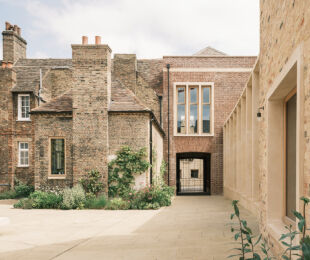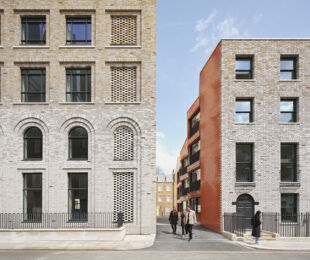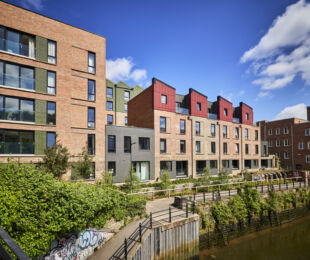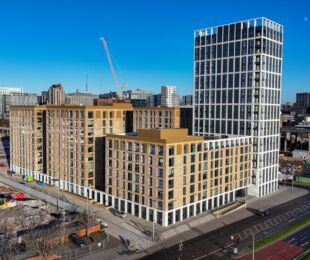
Zed House is the flagship zero carbon home concept of Barratt Homes, developed in conjunction with Salford University. It is the first new home in the country built by a major housebuilder to go beyond the new Future Homes Standard by delivering a carbon reduction of 125%.
The new house features cutting edge technology such as overhead infrared panels that provide instant zero carbon heat; new air powered showers that will save families hundreds of pounds per year in water and heating bills; plaster which eliminates pollutants giving cleaner, healthier air; a fridge which keeps the right humidity resulting in 60% less food wastage; and innovative heated skirting boards delivering 10% more heat than traditional radiators whilst also saving space.
Zed House has been constructed using the latest building methods incorporating Modern Methods of Construction (MMC), such as such as closed panel timber frames with highly insulated cladding, factory fitted windows and off-site panelised masonry ground-floor wall panels, reducing the need for bricklayers and the time it takes to build by half. And it includes the most modern sustainable housing technology such as an air source heat pump, EV charging points, PV solar panels and battery storage.
To complement the timber effect cladding of the upper storey, clay brick was selected as the facing material on the ground floor level for both its aesthetic quality and consistency with housebuilding in the North West.
Instead of standard bricklaying, a mechanical brick cladding system devised by Forterra was used. Originally developed for use on a project with Derby Council to clad for the city’s flood defences, Forterra further developed the system for use in house building, creating larger panels that allow for window and door openings. Other adaptations to the system included weep vents, fire retardants and drip trays present in the cavity of the wall. This off-site manufactured wall system is designed to reduce onsite waste, improve aesthetic quality and increase the construction speed of brick built buildings.
Forterra’s product development team worked closely with the Zed House project’s timber frame team, and other project partners, to understand any constraints associated with hanging the cladding system from the timber frame. The brickwork panels were skilfully laid in a factory environment using a unique, high performance mortar before being delivered to site prefabricated. To ensure the appearance of traditionally laid brickwork, the coordinating brick patterns were set out to flow from panel to panel, with joins concealed under drainpipes or on corners.
Two bricks from the Forterra range were selected for the project: Butterley Blue Smooth was used below the damp-proof course, and Butterley Country Red Smooth was chosen as the facing brick for the ground-floor level.






